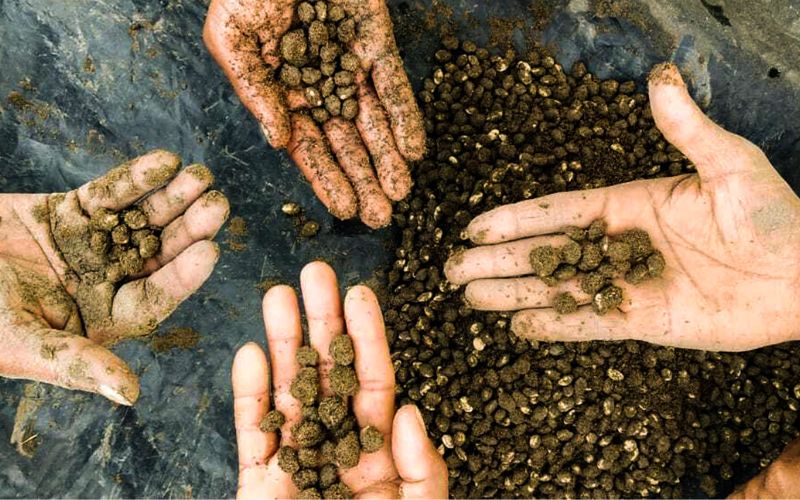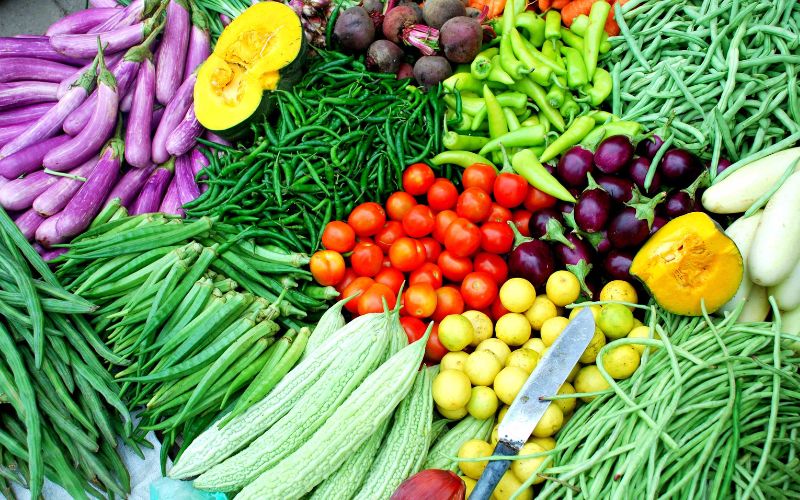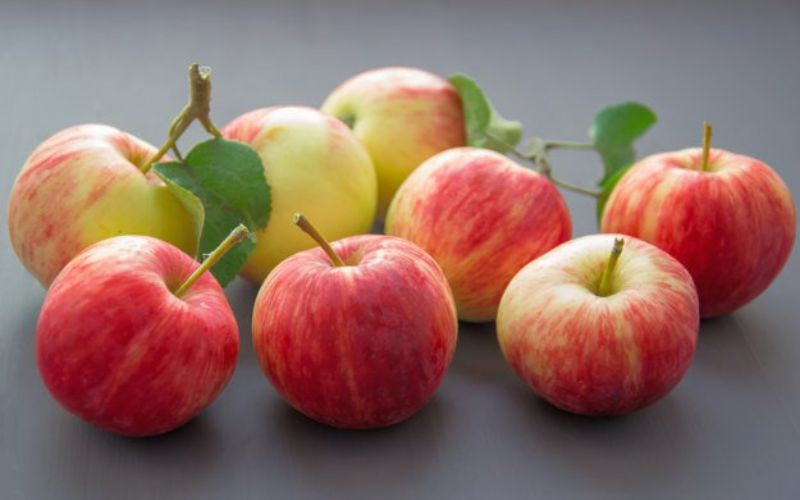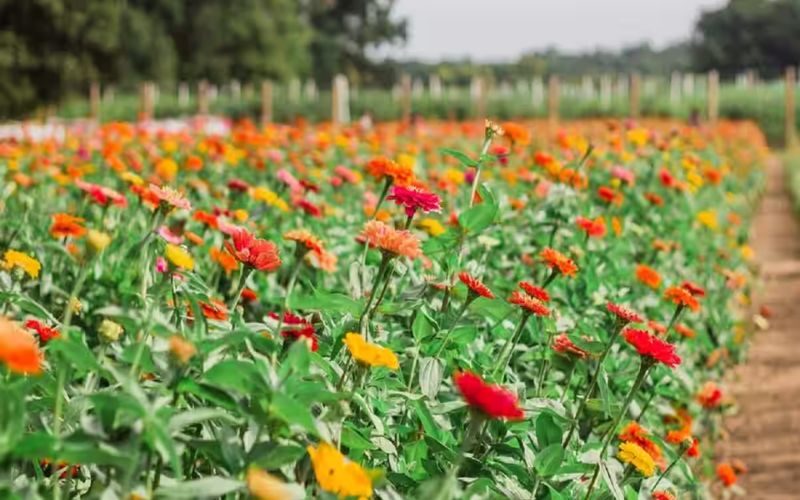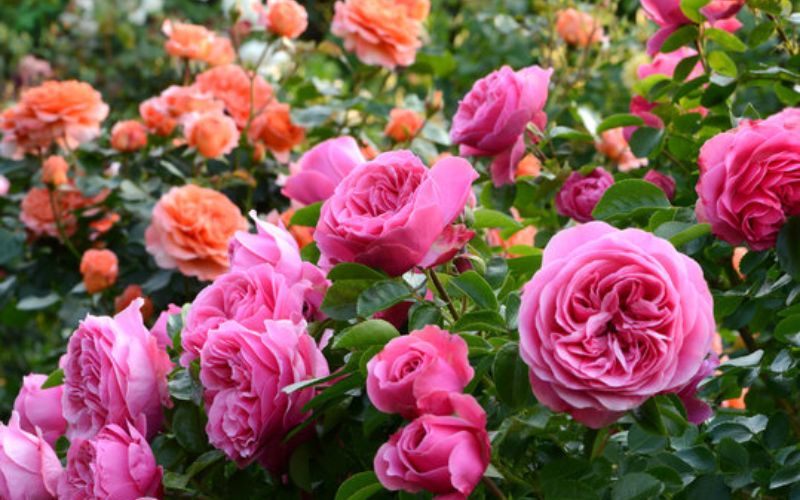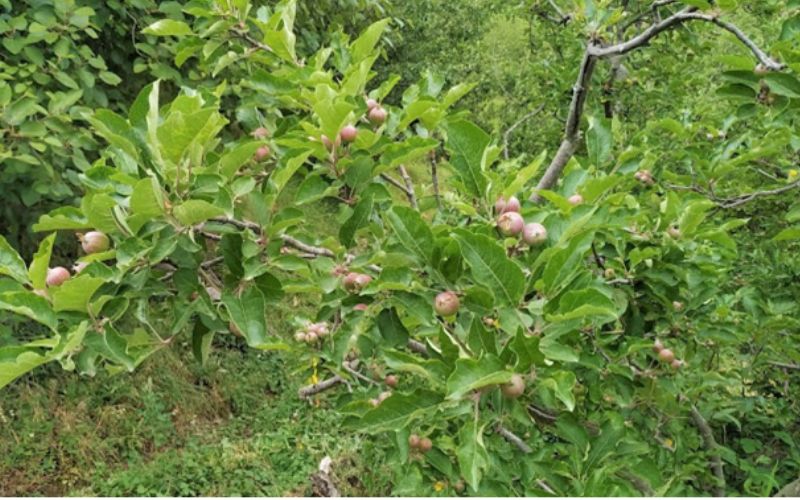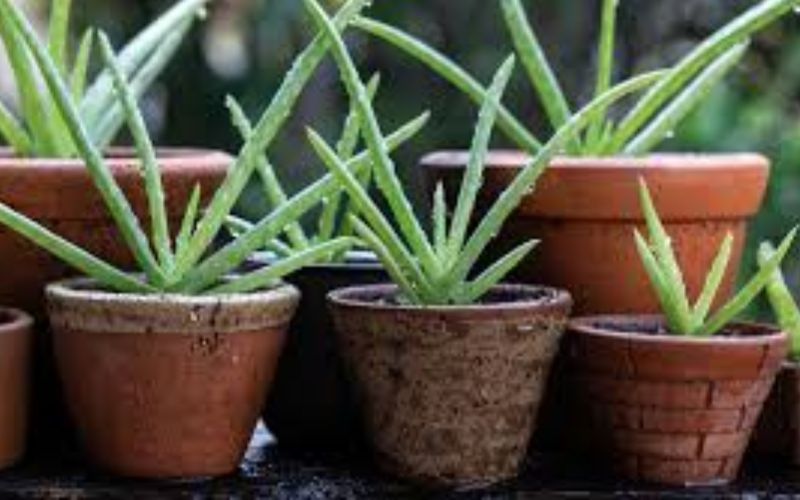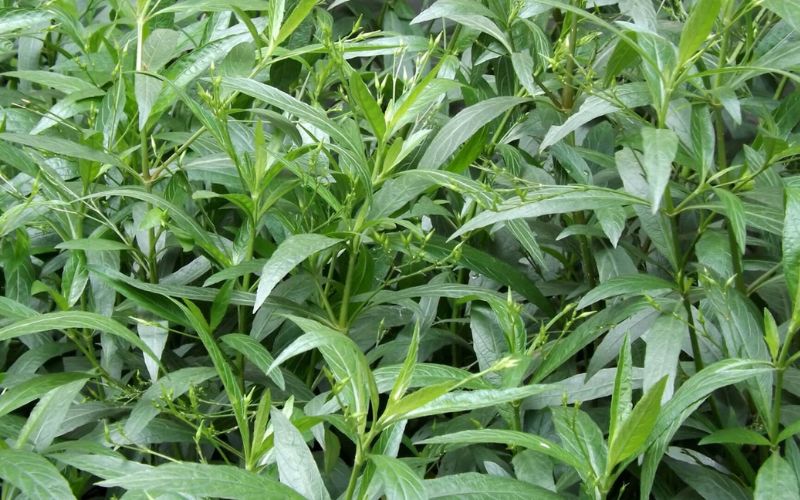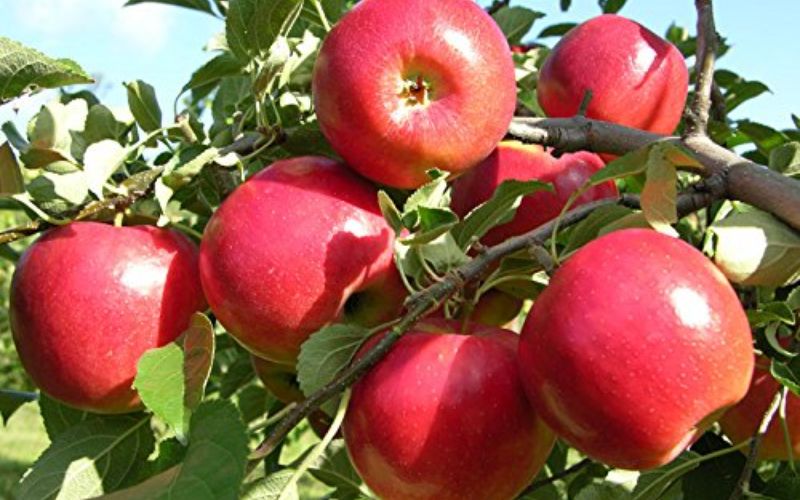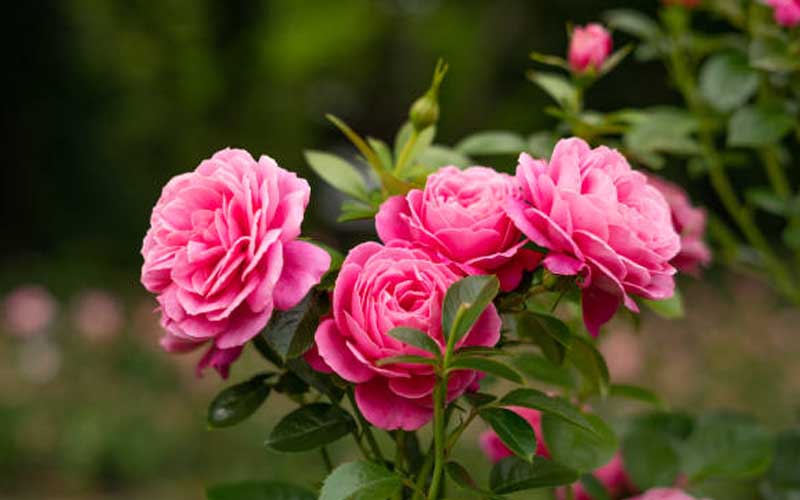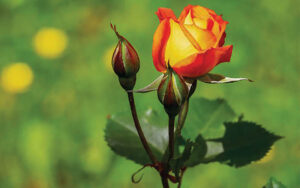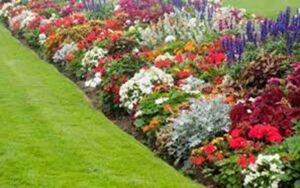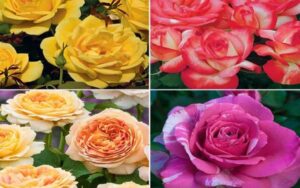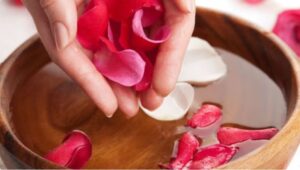Rose : The Eternal Beauty
Dr. P. Lalitha Kameswari,
Principal Scientist & Head, Krishi Vigyan Kendra, Pandirimamidi.
Rose has always been admired for its beauty and fragrance. They are the masterpiece of all the flowers as it emits beautiful positive feelings. No other flower surpasses it for its beauty, colour and fragrance and so it is called as the “Queen of flowers”. Red roses are a symbol of love and romance. White roses are symbolic of innocence, purity, honour and reverence. They are the most loved flowers across the Globe. This flower is more than 35 million years old and mankind has been growing them for more than 5,000 years. It occupies the first position in International market of cut flowers. Rose cultivation in India is becoming more and more popular because of its increase in demand as cut flower and higher commercial gains. It belongs to the family Rosaceae. In India it was referred in old Sanskrit literature as Tarnipushpa, Atimanjula, Simantika.
Roses are being cultivated from ancient times in France, Cyprus, Greece, India, Iran, Italy, Morocco, USA and Bulgaria for production of perfume. In India, several species are found growing wild mostly in the Himalayan ranges. Their cultivation is concentrated at Aligarh, Kannauj, Ghazipur, Ballia and Jaunpur in Uttar Pradesh, at Haldighati in Rajasthan, Chandigarh and in Tamil Nadu in a total area of about 8,000 ha. The major rose producing states are Karnataka, Maharashtra, Punjab, Uttar Pradesh, Delhi and Chandigarh, while in Gujarat, Haryana, Himachal Pradesh, Madhya Pradesh, Rajasthan, Tamil Nadu and West Bengal they are grown to a limited extent. The production of cut flower roses has increased by 0.46 lakh tonnes during the period of last three year (2013-14 to 2015-16). The state wise picture of production of cut roses revealed that the West Bengal ranked 1st with a production of 63.32 thousand tonnes in the year 2015-16. In recent times, more than 100 units have been established under joint ventures around Bangalore, Pune, Nasik, Mumbai, Hyderabad, Gurgaon (Haryana), Chandigarh and Saharanpur (Uttar Pradesh) for growing roses in greenhouses for export of flowers to Japan, Holland, Germany and other European countries. The major exporter of rose is Netherlands and Germany is the largest importer followed by USA, Netherlands, France, Switzerland and U.K. In India, Karuturi Global Limited is the leading producer and exporter of cut roses on the global level. It produces around 500 million rose stems annually with a capacity to process 12 million premium cut roses at its state-of-the-art facilities.
IMPORTANCE AND ITS USES
- It is used in landscaping for garden display, pot plants, hedging, beautifying the gardens and walkways and various commercial purposes like perfumes, rose water, rose oil, gulkhand, pankhuri, gulrohan and pot pourri
- Rose petals in combination with sugar are used as a tonic and laxative.
- Roses are of commercial importance and are mostly used for vase and table decoration and for making of bouquets.
- It helps in soothing skin irritation, sore throats and reduces skin redness
- Helps in preventing and treating infections as it has antiseptic and analgesic properties
- Rose petals and rose oil have a number of antioxidants.
- It heals cuts ,wounds ,scars and burns and has antibacterial property
- It is used as an antidepressant and it can relax the nervous system
- It relieves headache and is most commonly used in aromatherapy.
- It has anti-ageing properties and helps in relieving digestion problems. It further improves bile secretion
- Rose water is anti-inflammatory, astringent, antiseptic and balances the pH.
- Source of vitamins: Rose hips are very good source of ascorbic acid (vit – C). Every 100 g contains 150 mg of ascorbic acid
- Rose petals are used to make skin healthy and glowing, it cures dry and patchy skin.
- Rose herbal tea is used in treating cold and cough.
- Roses are widely used in candles, lotions, bath oils and perfumes.
Besides, the Damask rose (Rosa. damascena) and Edouard roses (R. bourboniana) are cultivated for rose attar and other products, gulkand, gulabjal and pankhurj.
Roses cultivation under naturally ventilated greenhouse.
In Europe and USA, commercial cultivation of roses for production of cut flowers is mostly done under climate controlled green house, where ultra-high plant density is practised. In India, the present high-tech floricultural export oriented units (EOU) have benefited by and large the corporate sector and large sized entrepreneurs whereas for small growers greenhouse technology has still remained a myth. High initial investment for establishing a greenhouse is one of the biggest constraint for a small grower. However, of late the consumer’s preference for high quality produce even in the domestic market is paving a way for protected cultivation of flowers by quite a few farmers. Even in few states Government is supporting farmers in production of high quality roses by giving subsidies for construction of naturally ventilated green houses.
In poly houses, planting of rose plants at a density of 7 plants/m2 (45cm between the row and 15 cm between the plant in double row system) with recommended dose of fertilizers through fertigation along with foliar application of micronutrients (multiplex 2 ml/l of water) at weekly interval is recommended to get maximum flower yield of 196 fl/m2/year and 20,000 flowers/100m2/year realizing a net profit of Rs.10,000/100m2 /year).
Climate and Soil:
Roses are grown in cold climate of the hills as well as in the plains of northern and southern regions. Some of the best quality roses can be produced in open in the cool season of northern plains like Chandigarh, Ambala, Patiala, Jaipur, Ajmer, Udaipur, Delhi, Meerut, Lucknow, Saharanpur, Dehradun. In eastern India, roses do well around Ranchi, Patna, Jamshedpur, Calcutta, Nagpur, Pune, Nasik, Indore, Bhopal and Gwalior. In south, Bangalore, Hyderabad have a mild climate where roses grow quite well and flower over a longer period. Roses are grown well in tropical and subtropical weather condition in the worldwide. The perfect temperature conditions for rose farming techniques in between 15 °C to 28 °C. Rose plants requires at least 5 to 6 hours sunlight during the growth phase and flowering period.
The ideal soil for rose flowers should be well drained, medium loam having sufficient organic matter, proper drainage and pH of 6.0 to 7.5. Heavy clay soil is not suitable for roses. The plants do not thrive in saline sodic soils.
Varieties:
Modern roses grown in gardens are Hybrid Teas, Floribunda (also Grandiflora), Polyantha, Climbers and Ramblers, Miniatures and Shrub roses. However, in the cut flower trade, the rose varieties are classified as large-flowered, small-flowered and spray types. There are 20,000 or more rose cultivars in the world. About 250–300 new varieties are added every year. The International Registration Authority of Roses is located in the USA which registers the newly evolved roses in the world and lists them in the book “Modern Roses” which is updated periodically. In India, the National Registration Authority of Roses under the International Registration Authority, is at the Indian Agricultural Research Institute, New Delhi, which undertakes registration of newly evolved Indian rose cultivars. Taj Mahal, Red Flame, First Red, Grand Gala, Vivaldi, Konfetti, Tineke, Aalsmeer Gold, Ambience, Cocktail, Papillon and Ravel are some of the Internationally reputed long stemmed rose varieties. ‘Kohinoor’ is another rose variety which is a baby orange-pink rose. The main markets for these flowers are Europe, Australia, The Middle East and Japan.
‘Arka Savi’ is a spray category of rose belonging to floribunda group identified for commercial cultivation in open field for loose flower production.

Spacing:
Proper spacing is important for proper growth of plants avoiding competition for space, sunlight and nutrients. Spacing varies with the variety used for planting. Cultivars like Queen Elizabeth, Happiness and Super giant grow vigorously requiring wider spacing. The planting distances are 90cm – 120cm in standards, 3m in climbers and 45cm in polyanthus. A closer planting distance of 30cm × 60cm is ideal for obtaining cut flowers.
Best Irrigation System for Rose Farming
There are many irrigation systems available in latest technology like drip irrigation, sprinkler irrigation, micro jet, and basin irrigation but rose flower plant requires less water compared to other flower farming. So, the drip irrigation is most suitable for the rose farming. The rose beds should receive well-spread water but no waterlogging. Sprinkler irrigation should be avoided as it encourages infection of leaf diseases and often exposes the feeder roots of plants.
Pruning –
The rose bushes are pruned once a year during second or third week of October in the northern plains. After about 6–7 weeks of pruning, the plants start flowering. The time of flowering can be adjusted according to the date of pruning. Hard pruning of Hybrid Tea and Floribunda, keeping only 3 or 4 shoots with 3 or 4 eyes from the base is practised for obtaining exhibition blooms. While in the northern plains, the pruning is done in October, it is practised during late-October to early-November in West Bengal, November-end to early-December in Chennai, March–April in the hills, and twice a year during June and November in Bangalore and Pune.
Harvesting and Postharvest Management –
The rose flowers are cut while still in the bud stage after the sepals curl back and the colour is fully showing. In foreign market, the size of stem varies from 60–90cm for large-flowered roses and 40–50cm for small-flowered ones depending upon the grade. The size of large-flowered bud is 3–3.5cm and 2–2.5cm for the small-flowered.
The flowers are harvested in early morning or late in the afternoon. The cut roses are kept in plastic buckets/containers filled with clean water having disinfectant and preservative (silver thiosulphate) to enhance their shelf-life. These flowers are shifted to precooling chambers having a temperature of 10°C, and kept there for about 12hr. The flowers are graded for their stem length, quality and variety. The graded flowers are bunched with 10 or 20 stems in each bunch and sleeved with thick paper or plastic film. These flowers are then packed in telescopic corrugated cardboard boxes of specified dimensions. The flower boxes are kept in cold storage at 2°–4°C temperature for 12–24hr.
Rose Flower Yield
In rose farming yield of rose flowers mainly depends on the climate, field management, irrigation, variety cultivated and fertilizers. Economical yield from rose is obtained from second year onwards. In Poly houses Hybrid Tea and Floribunda roses yield approximately 150-250 and 250-300 flowering shoots/sqm/year respectively.
Impact of COVID -19:
In the aftermath of COVID-19 the lockdown has significantly disrupted economic activities and supply chains. The lockdown imposed to curb the transmission of the coronavirus pandemic made people confined to their homes while many non-essential businesses like floriculture devastated, leaving thousands of small and marginal farmers hapless as their year long preparation and planning to raise a variety of flowers came to a naught. At the end of year 2021 slowly normal situation in floriculture sector returned back giving hope to floriculture sector to flourish.



